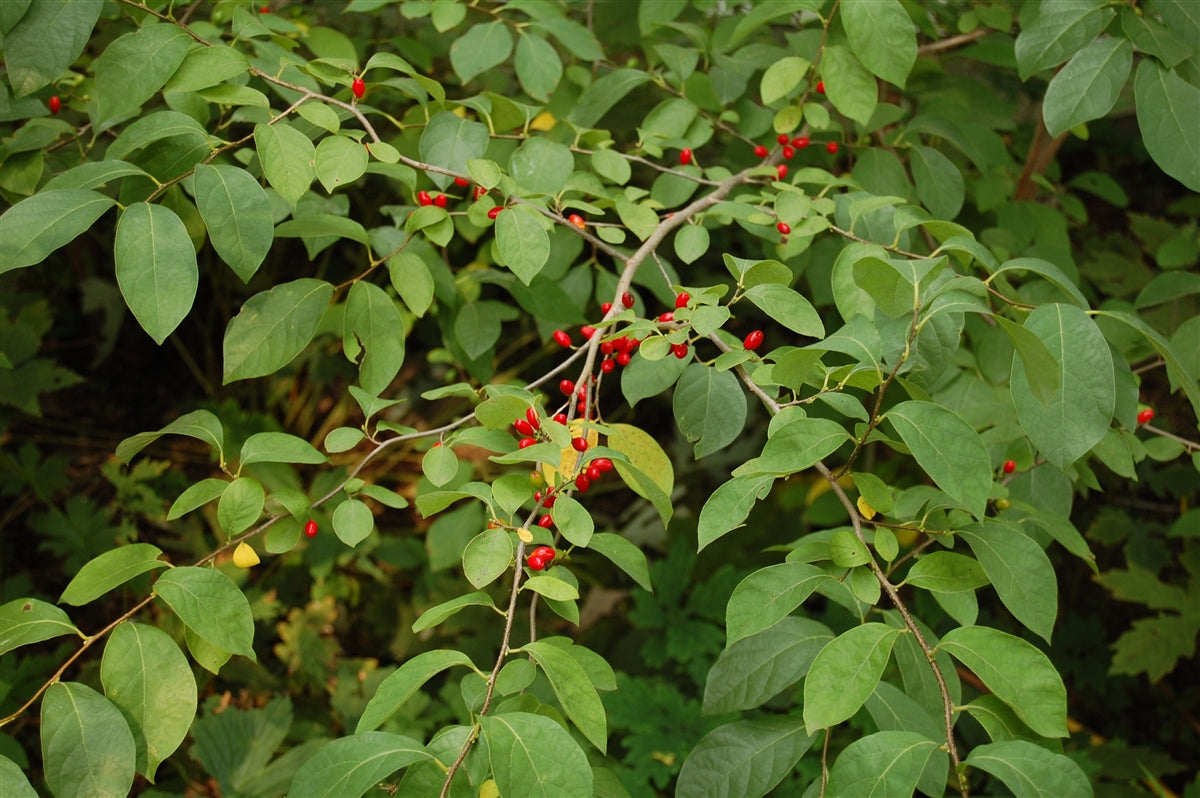Spicebush, Bare Root
Host Plant for Spicebush Swallowtails
Spicebush, Bare Root - Bare Root / 6-18" Seedling is backordered and will ship as soon as it is back in stock.
Couldn't load pickup availability
Delivery and Shipping
Delivery and Shipping
Make sure to thoroughly review our entire "Shipping, Returns, Refunds, and Our Guarantee" page for all relevant details about ordering from our store.
Making a purchase from our store constitutes an agreement to all the conditions outlined in those policies.
We appreciate your support and look forward to being your favorite plant provider!
Subscribe to our newsletter
Sign up for exclusive offers.
Spicebush (Lindera benzoin)
Spicebush is a fragrant, shade-tolerant native shrub found in moist woodlands and streambanks across the eastern U.S. Known for its early yellow blooms, wildlife value, and aromatic foliage, Spicebush is a cornerstone species for native understory plantings, rain gardens, and woodland restoration projects. As the primary host plant for the Spicebush Swallowtail butterfly (Papilio troilus), it plays a vital role in supporting insect life and creating rich, layered habitats in forest gardens and riparian buffers.
Key Characteristics
-
Critical host plant for Spicebush Swallowtail
Spicebush is the larval host for the beautiful Spicebush Swallowtail butterfly, whose caterpillars rely exclusively on this shrub and its close relatives. It also supports other moths and beneficial insects, helping build insect-rich, bird-friendly habitats. -
Early blooming nectar source for pollinators
In very early spring, before the leaves emerge, small yellow flowers cover the branches, providing one of the season’s first nectar sources for native bees and emerging pollinators. These flowers are a key part of succession planting to support pollinator life cycles. -
Bright red berries for birds (female plants only)
On female plants (with a male nearby for pollination), bright red berries ripen in late summer and are eaten by thrushes, catbirds, and other songbirds. The fruit is high in lipids, making it especially valuable for fall migratory birds. -
Fragrant foliage and traditional uses
The leaves, twigs, and berries release a citrusy-spice aroma when crushed. Indigenous peoples and early settlers brewed the twigs and leaves into teas for colds and fevers, and the dried fruit has been used as a native allspice substitute in cooking. -
Excellent for shady, moist native plantings
Spicebush thrives in part shade to full shade and moist, well-drained soils. It’s ideal for streambank restoration, shaded hedgerows, forest gardens, and the understory layer of permaculture designs.
Product Details
- Native range: Eastern U.S., from Maine to Florida and west to Texas
- Plant life cycle: Deciduous Shrub
- Sun requirements: Part shade to full shade
- Soil requirements: Medium to medium-wet; prefers moist, rich, well-drained soils
- Mature height: 6–12 feet
- Bloom time: Very early spring
- Bloom color: Pale yellow
- USDA Hardiness zones: 4–9
Spicebush is a must-have for native gardeners, naturalists, and permaculturists seeking to support early-season pollinators, butterflies, and songbirds. It’s an adaptable and fragrant shrub that brings multi-season beauty and ecological impact.
-
Sun RequirementsFull Shade, Part Sun/Shade
-
Soil RequirementsMedium, Medium-Wet
-
Bloom ColorYellow
-
Bloom TimeMarch, April
-
USDA Hardiness ZonesZone 4, Zone 5, Zone 6, Zone 7, Zone 8, Zone 9+
-
Native StatesMaine, Vermont, New York, Pennsylvania, Ohio, Indiana, Illinois, Michigan, Wisconsin, Missouri, Kentucky, Tennessee, Virginia, West Virginia, North Carolina, South Carolina, Georgia, Alabama, Mississippi
Payment & Security
Payment methods
Your payment information is processed securely. We do not store credit card details nor have access to your credit card information.




